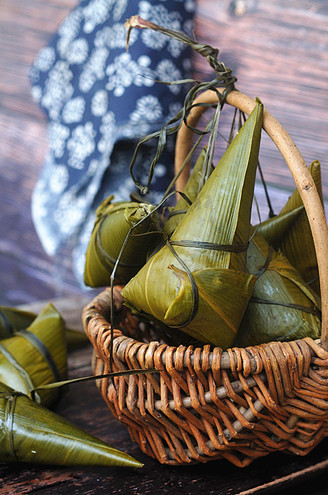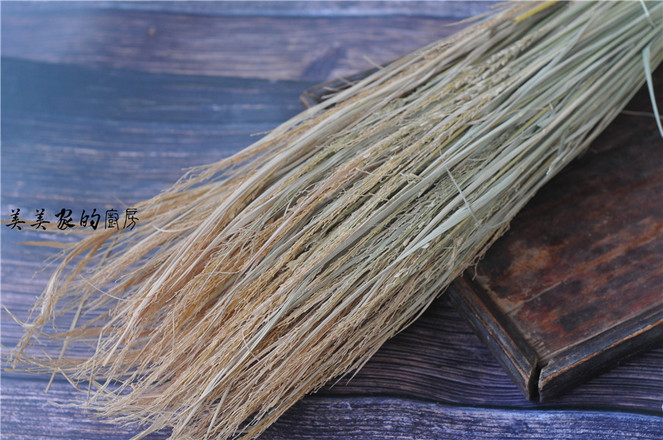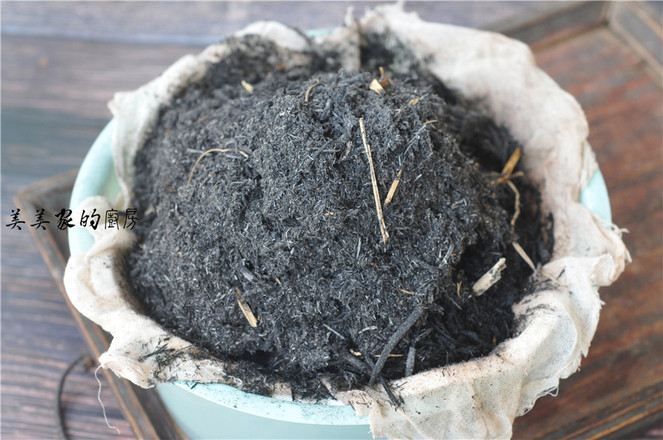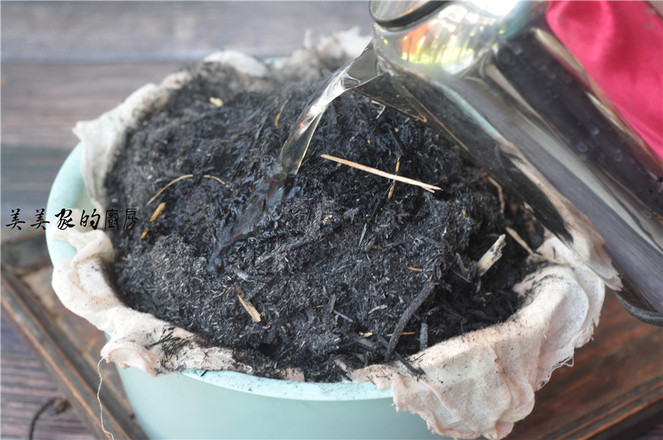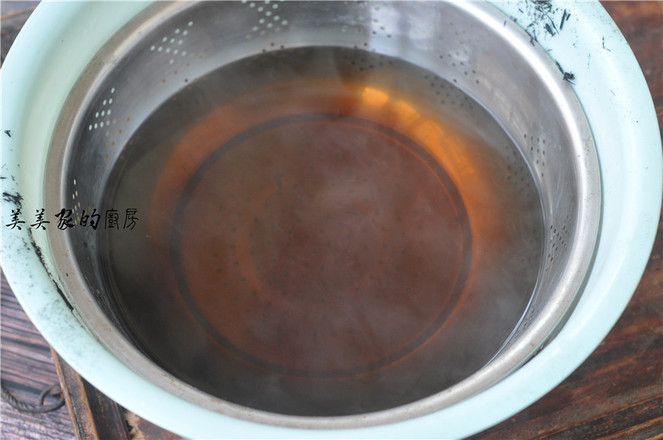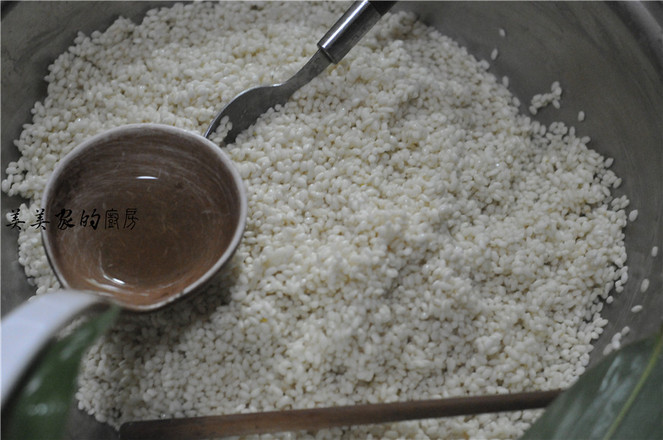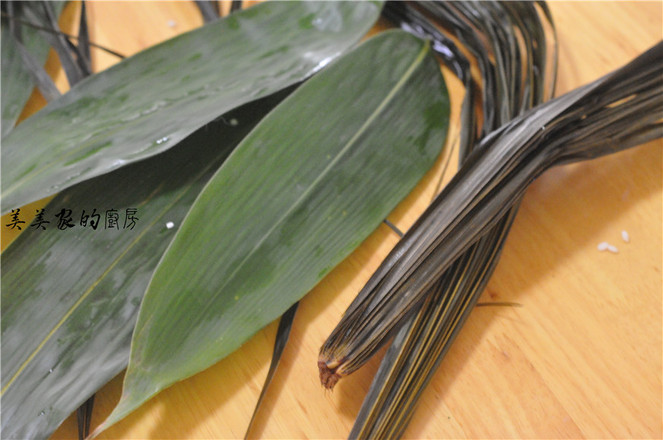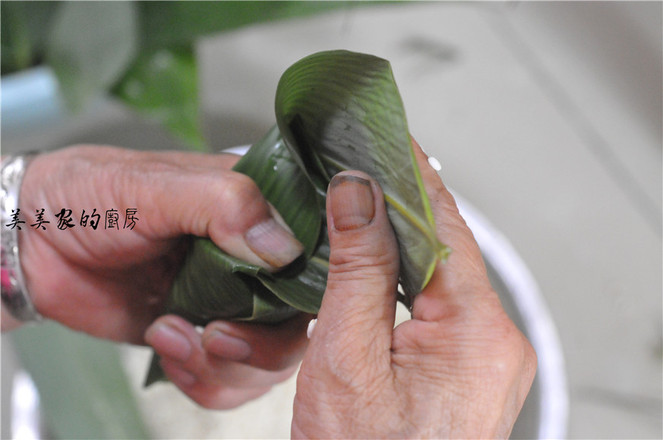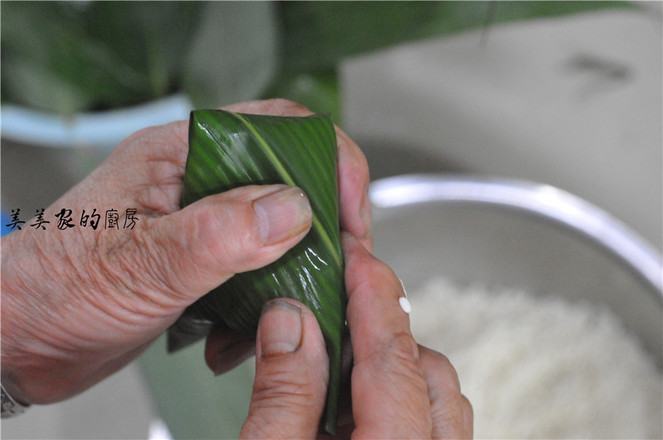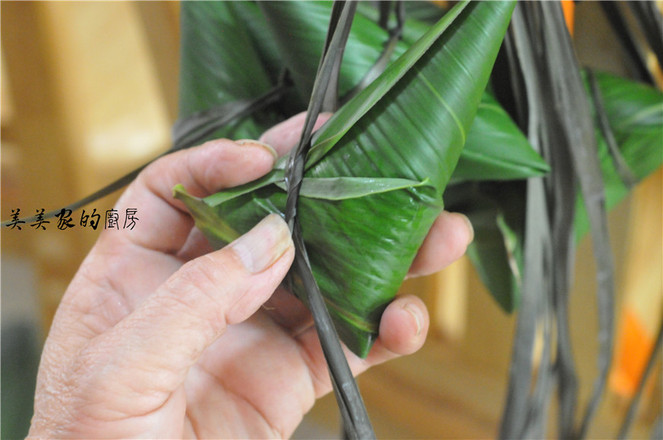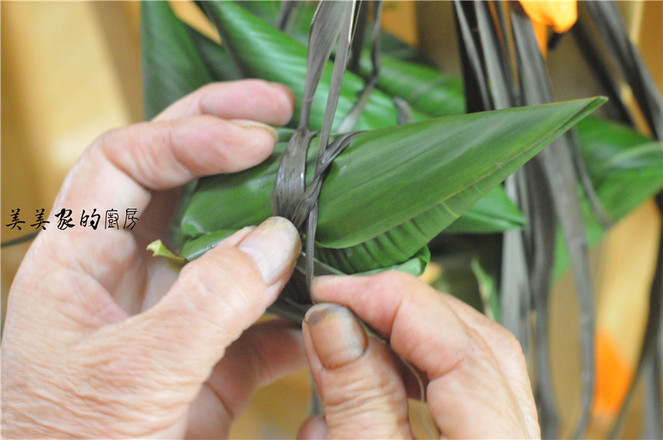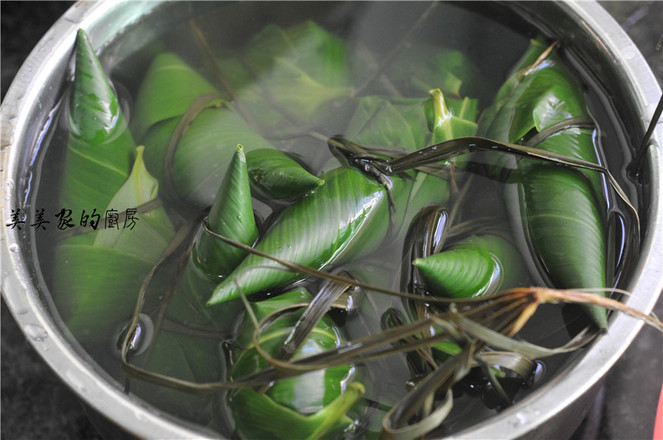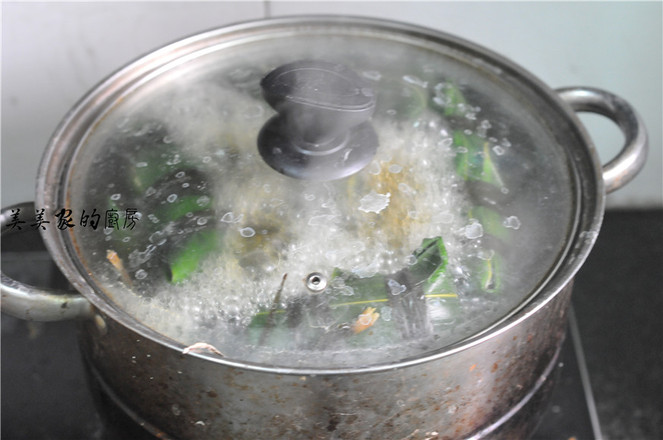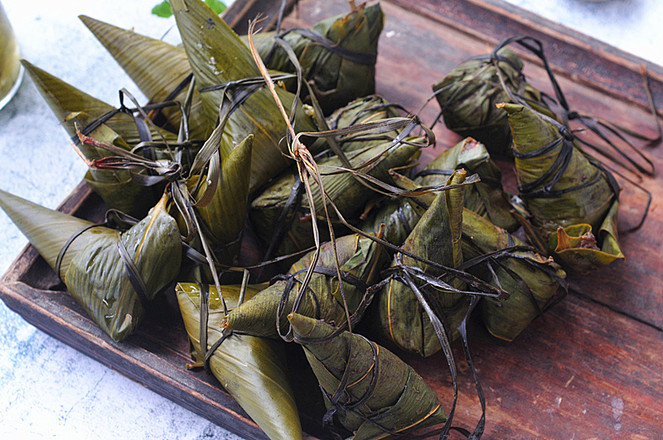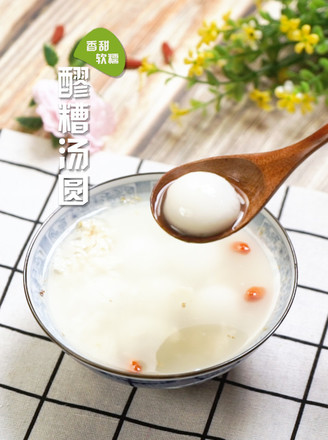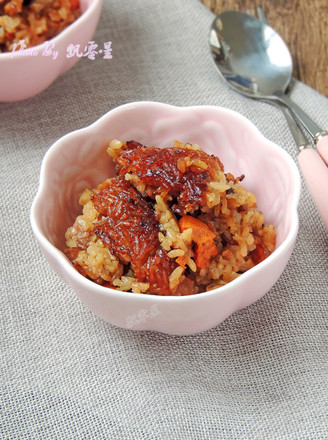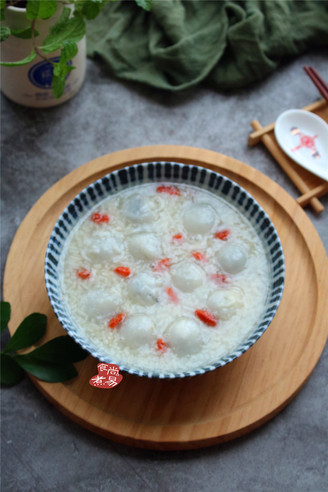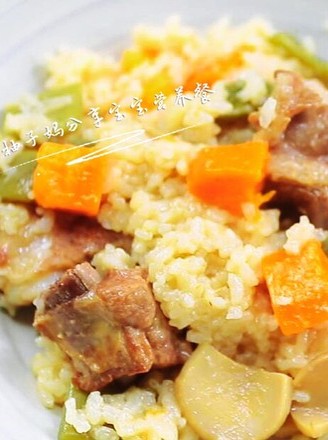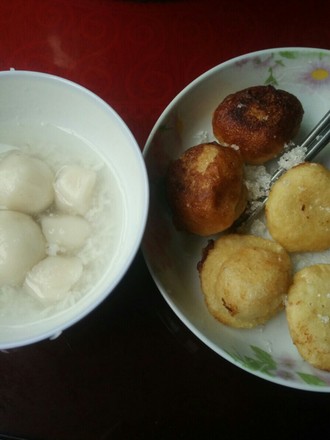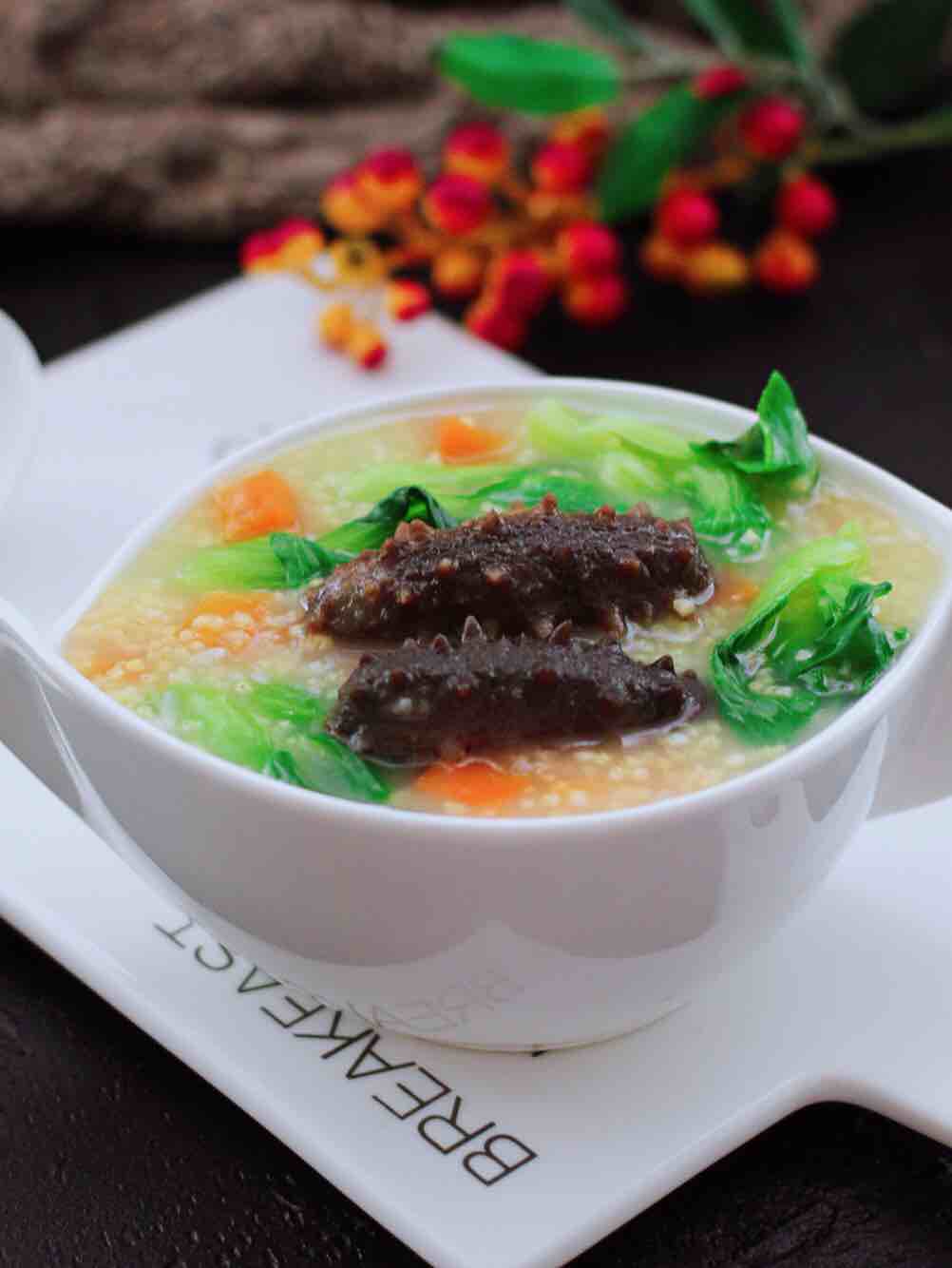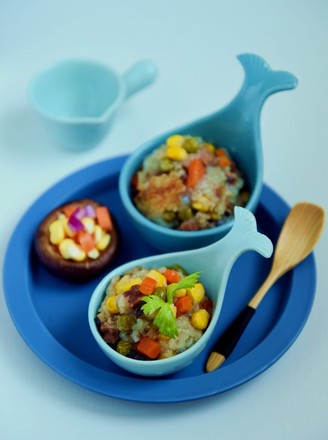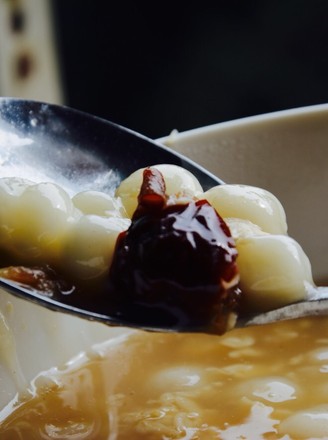Grass Gray Water Dumplings
by Meimeijia's Kitchen
Favorite
Difficulty
Hard
Time
2h
Serving
2
It's the Dragon Boat Festival again, an annual traditional festival. Has everyone started to prepare for the Dragon Boat Festival?
Dragon Boat Festival eating is always traditional. Whether you like it or not, you always have to eat two appropriate occasions. If you can make zongzi at home by yourself, it will be more festive! What kind of ritual is popular nowadays, we use traditional methods to celebrate various traditional festivals, this kind of ritual is even more indispensable.
Find a free weekend and take your kids to make rice dumplings! While talking about the origin of the Dragon Boat Festival, while teaching children to make zongzi, many years later, this experience is definitely the most precious memory of children.
Meimei’s memory of the Dragon Boat Festival is particularly deep, because when she was a child, her mother always wrapped a lot of rice dumplings every year, and the firewood was slowly cooked overnight, and she was awakened by the attractive smell of the rice dumplings early the next morning! For the next few days, Ke Jin ate zongzi and looked at the zongzi hanging on the wall. For a little cat, it really seemed to be satisfied with the world’s food.
Nowadays, there are many varieties of zongzi, and the fillings inside are getting more and more high-end. Not to mention seafood abalone, the most common ones are also covered with ribs and salted egg yolk, but Meimei’s favorite is the white rice that did not put anything in when I was a child. Zongzi.
Our Hunan traditional white rice dumplings are actually not white, but light golden yellow, because when making the dumplings, you need to soak the rice with grass gray water, so the rice grains become golden and golden, exuding a unique fragrance. You don't need to put any ingredients, you can eat a few in an empty mouth. Children like to use a chopstick to stick it up and roll it in the sugar, so that the rice dumplings are evenly coated with a layer of sugar, and lightly bite. The Q bomb is refreshing and melts in the mouth. There is no better rice dumpling than it. Up!
When I was young, I just had to eat, but now I know that the wisdom of the ancients is really impressive. The rice dumplings made from this ordinary grassy gray water have wonderful effects.
Grey water rice dumplings are golden in color, crystal clear and transparent, suitable for cold eating, and can be used as a refreshing food to quench thirst in summer.
The traditional gray water dumplings do not add any fillings. The glutinous rice is mixed with grass gray water and wrapped directly with rice dumpling leaves to make the gray water dumplings. The biggest feature of the gray water dumplings is that the rice grains are not sticky or scattered, the flesh is golden and transparent, and the mouth is not greasy. When eaten with honey or white sugar, the taste is refreshing and elastic, and there is a slight alkaline water fragrance.
Zongzi with grey water will be stored for a relatively long time. And eating gray water dumplings can balance the body's pH. In addition, the grey water dumplings taste smooth, not greasy and not greasy. With natural alkaline substances, the main ingredients are sodium carbonate and potassium carbonate. Proper gray water can make glutinous rice absorb water when it is decomposed by heat, and achieve good viscoelasticity. Grass gray water also has the functions of antiseptic, neutralizing acidity, etc. A small grass gray water has a lot of effects.
Dragon Boat Festival eating is always traditional. Whether you like it or not, you always have to eat two appropriate occasions. If you can make zongzi at home by yourself, it will be more festive! What kind of ritual is popular nowadays, we use traditional methods to celebrate various traditional festivals, this kind of ritual is even more indispensable.
Find a free weekend and take your kids to make rice dumplings! While talking about the origin of the Dragon Boat Festival, while teaching children to make zongzi, many years later, this experience is definitely the most precious memory of children.
Meimei’s memory of the Dragon Boat Festival is particularly deep, because when she was a child, her mother always wrapped a lot of rice dumplings every year, and the firewood was slowly cooked overnight, and she was awakened by the attractive smell of the rice dumplings early the next morning! For the next few days, Ke Jin ate zongzi and looked at the zongzi hanging on the wall. For a little cat, it really seemed to be satisfied with the world’s food.
Nowadays, there are many varieties of zongzi, and the fillings inside are getting more and more high-end. Not to mention seafood abalone, the most common ones are also covered with ribs and salted egg yolk, but Meimei’s favorite is the white rice that did not put anything in when I was a child. Zongzi.
Our Hunan traditional white rice dumplings are actually not white, but light golden yellow, because when making the dumplings, you need to soak the rice with grass gray water, so the rice grains become golden and golden, exuding a unique fragrance. You don't need to put any ingredients, you can eat a few in an empty mouth. Children like to use a chopstick to stick it up and roll it in the sugar, so that the rice dumplings are evenly coated with a layer of sugar, and lightly bite. The Q bomb is refreshing and melts in the mouth. There is no better rice dumpling than it. Up!
When I was young, I just had to eat, but now I know that the wisdom of the ancients is really impressive. The rice dumplings made from this ordinary grassy gray water have wonderful effects.
Grey water rice dumplings are golden in color, crystal clear and transparent, suitable for cold eating, and can be used as a refreshing food to quench thirst in summer.
The traditional gray water dumplings do not add any fillings. The glutinous rice is mixed with grass gray water and wrapped directly with rice dumpling leaves to make the gray water dumplings. The biggest feature of the gray water dumplings is that the rice grains are not sticky or scattered, the flesh is golden and transparent, and the mouth is not greasy. When eaten with honey or white sugar, the taste is refreshing and elastic, and there is a slight alkaline water fragrance.
Zongzi with grey water will be stored for a relatively long time. And eating gray water dumplings can balance the body's pH. In addition, the grey water dumplings taste smooth, not greasy and not greasy. With natural alkaline substances, the main ingredients are sodium carbonate and potassium carbonate. Proper gray water can make glutinous rice absorb water when it is decomposed by heat, and achieve good viscoelasticity. Grass gray water also has the functions of antiseptic, neutralizing acidity, etc. A small grass gray water has a lot of effects.

